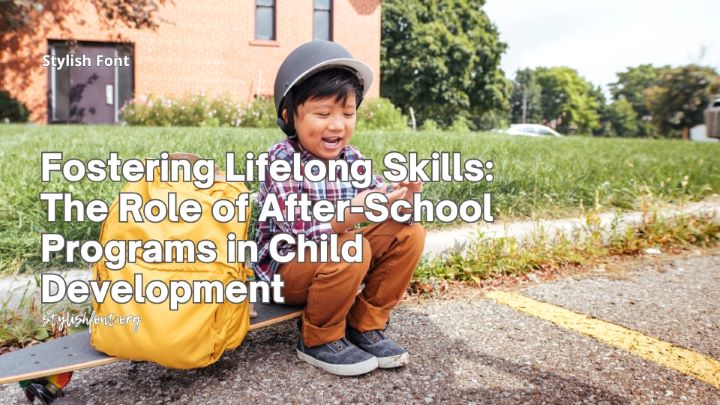Artificial Intelligence (AI) has emerged as a transformative force in various sectors, fundamentally altering how tasks are performed and decisions are made. At its core, AI refers to the simulation of human intelligence processes by machines, particularly computer systems. These processes include learning, reasoning, and self-correction.
The evolution of AI has been marked by significant milestones, from early rule-based systems to the sophisticated machine learning algorithms that dominate today’s landscape. Understanding these foundational concepts is crucial for anyone looking to engage with AI meaningfully. The basic components of AI can be categorized into several key areas: machine learning, natural language processing, robotics, and computer vision.
Machine learning, a subset of AI, enables systems to learn from data and improve their performance over time without being explicitly programmed. Natural language processing allows machines to understand and interpret human language, facilitating more intuitive interactions between humans and computers. Robotics combines AI with physical machines to perform tasks ranging from simple assembly line work to complex surgical procedures.
Each of these areas contributes to the broader understanding of AI and its capabilities, setting the stage for deeper exploration into its applications and implications.
Key Takeaways
- AI is the simulation of human intelligence processes by machines, including learning, reasoning, and self-correction.
- Critical thinking skills are essential in AI to analyze and evaluate information, solve problems, and make decisions.
- AI has a significant impact on society, including job displacement, privacy concerns, and ethical implications.
- Ethical considerations in AI include fairness, accountability, transparency, and privacy in the development and use of AI technologies.
- AI can be utilized for problem-solving in various fields, such as healthcare, finance, and environmental sustainability.
Developing Critical Thinking Skills in AI
Evaluating AI Output
In the context of AI, critical thinking is crucial for evaluating the outputs of AI systems and understanding their limitations. Individuals must learn to scrutinize the data that feeds these systems, the algorithms that process it, and the conclusions drawn from it.
Considering Ethical Implications
Developing critical thinking skills in relation to AI encourages individuals to consider the ethical implications of its use. For instance, when faced with an AI-generated recommendation or decision, critical thinkers will assess the potential biases inherent in the data or algorithms. They will ponder questions such as: Who benefits from this decision? Are there marginalized voices that are overlooked?
Becoming Discerning Consumers
By cultivating these skills, individuals can become more discerning consumers of AI technology, advocating for transparency and accountability in its deployment.
Recognizing the Impact of AI on Society

The impact of AI on society is profound and multifaceted, influencing everything from employment patterns to social interactions. As automation becomes more prevalent, many traditional jobs are at risk of being displaced by machines capable of performing tasks more efficiently. This shift necessitates a reevaluation of workforce skills and training programs to prepare individuals for a future where human-AI collaboration is commonplace.
Recognizing this impact is crucial for policymakers, educators, and business leaders as they navigate the challenges and opportunities presented by AI. In addition to economic implications, AI also affects social dynamics. The way people communicate and interact is evolving due to AI-driven technologies such as chatbots and virtual assistants.
While these tools can enhance convenience and accessibility, they also raise concerns about reduced human interaction and the potential for social isolation. Furthermore, the pervasive use of AI in decision-making processes—ranging from credit scoring to law enforcement—can perpetuate existing biases if not carefully monitored. Understanding these societal impacts is essential for fostering a balanced approach to AI development that prioritizes human well-being alongside technological advancement.
Ethical Considerations in AI
| Aspect | Metrics |
|---|---|
| Fairness | Percentage of biased AI algorithms identified and corrected |
| Transparency | Number of AI systems with clear explanations of decision-making processes |
| Privacy | Number of AI applications compliant with data protection regulations |
| Accountability | Percentage of AI developers implementing mechanisms for accountability |
| Security | Number of AI systems protected against cyber attacks and unauthorized access |
The ethical considerations surrounding AI are complex and often contentious. As AI systems become more integrated into daily life, questions about privacy, accountability, and fairness come to the forefront. For instance, the collection and analysis of personal data by AI systems raise significant privacy concerns.
Individuals may unknowingly consent to their data being used in ways that could compromise their security or autonomy. Therefore, it is imperative for developers and organizations to establish robust ethical guidelines that prioritize user consent and data protection. Moreover, issues of bias and discrimination in AI algorithms cannot be overlooked.
If the data used to train these systems reflects societal prejudices, the resulting outputs may perpetuate or even exacerbate inequalities. This reality underscores the need for diverse teams in AI development who can identify potential biases and advocate for inclusive practices. Ethical considerations in AI are not merely theoretical; they have real-world implications that can affect millions of lives.
As such, fostering a culture of ethical awareness among AI practitioners is essential for ensuring that technology serves humanity equitably.
Utilizing AI for Problem-Solving
AI has proven to be a powerful tool for problem-solving across various domains. Its ability to analyze vast amounts of data quickly allows organizations to identify patterns and insights that would be impossible for humans to discern alone. For example, in healthcare, AI algorithms can analyze patient records to predict disease outbreaks or recommend personalized treatment plans based on individual health data.
This capability not only enhances patient outcomes but also streamlines healthcare operations. In addition to healthcare, AI is making strides in environmental conservation efforts. Machine learning models can predict climate patterns and assess the impact of human activities on ecosystems.
By leveraging these insights, policymakers can make informed decisions about resource management and conservation strategies. The versatility of AI as a problem-solving tool highlights its potential to address some of society’s most pressing challenges, from public health crises to environmental sustainability.
Navigating AI in Education

The integration of AI into education presents both opportunities and challenges for students and educators alike. On one hand, AI can personalize learning experiences by adapting content to meet individual student needs. Intelligent tutoring systems can provide real-time feedback and support, helping students grasp complex concepts at their own pace.
This tailored approach has the potential to enhance student engagement and improve academic outcomes. However, navigating the use of AI in education also requires careful consideration of its implications for equity and access. Not all students have equal access to technology or the internet, which can exacerbate existing disparities in educational opportunities.
Educators must strive to ensure that AI tools are implemented in ways that promote inclusivity rather than deepen divides. By fostering an environment where all students can benefit from AI-enhanced learning experiences, educators can harness technology’s potential while addressing its challenges.
Fostering Collaboration and Communication with AI
Collaboration and communication are essential skills in today’s interconnected world, and AI can play a pivotal role in enhancing these abilities. Tools powered by AI can facilitate seamless communication among team members, regardless of their geographical locations. For instance, language translation applications enable individuals from different linguistic backgrounds to collaborate effectively on projects without language barriers hindering their progress.
Furthermore, AI-driven platforms can analyze team dynamics and suggest strategies for improving collaboration based on data-driven insights. By identifying strengths and weaknesses within teams, these tools empower individuals to work together more efficiently and harmoniously. As organizations increasingly rely on remote work arrangements, fostering collaboration through AI becomes vital for maintaining productivity and innovation.
Empowering Students to Create with AI
Empowering students to create with AI opens up new avenues for creativity and innovation in education. By providing access to user-friendly AI tools, educators can encourage students to explore their interests and develop projects that reflect their unique perspectives. Whether it’s generating art through machine learning algorithms or composing music with AI-assisted software, students can harness technology as a medium for self-expression.
Moreover, engaging students in creative projects involving AI fosters critical thinking and problem-solving skills. As they navigate the complexities of working with technology, students learn to approach challenges with curiosity and resilience. This hands-on experience not only enhances their technical abilities but also cultivates a mindset geared toward innovation—an essential trait in an increasingly automated world.
By empowering students to create with AI, educators can inspire the next generation of thinkers and creators who will shape the future landscape of technology. In conclusion, understanding the basics of AI is just the beginning of a much larger conversation about its role in society. As individuals develop critical thinking skills related to AI, recognize its societal impacts, consider ethical implications, utilize it for problem-solving, navigate its presence in education, foster collaboration through it, and empower students to create with it, they contribute to a more informed and responsible engagement with this powerful technology.
The journey into the world of AI is not merely about mastering tools; it is about shaping a future where technology serves humanity’s best interests while promoting equity and creativity.
One related article to AI literacy for students is “How Technology is Revolutionizing Senior Living Communities” which discusses the impact of technology on the lives of older adults. This article highlights the importance of understanding and adapting to new technologies in order to improve quality of life and overall well-being. To read more about this topic, check out the article here.
FAQs
What is AI literacy?
AI literacy refers to the ability to understand, use, and critically evaluate artificial intelligence technologies. It involves knowledge of how AI works, its applications, and its impact on society.
Why is AI literacy important for students?
AI literacy is important for students because it equips them with the skills and knowledge needed to navigate the increasingly AI-driven world. It helps them understand the technology shaping their future and prepares them for the workforce.
What are the key components of AI literacy for students?
Key components of AI literacy for students include understanding the basics of AI, its ethical implications, its applications in various fields, and the ability to critically evaluate AI technologies and their impact on society.
How can students develop AI literacy?
Students can develop AI literacy through educational programs, courses, and resources focused on AI and technology. They can also engage in hands-on projects, participate in AI competitions, and stay updated with the latest developments in the field.
What are the benefits of AI literacy for students?
The benefits of AI literacy for students include enhanced critical thinking skills, better understanding of technology, improved career prospects, and the ability to make informed decisions about AI-related issues.





